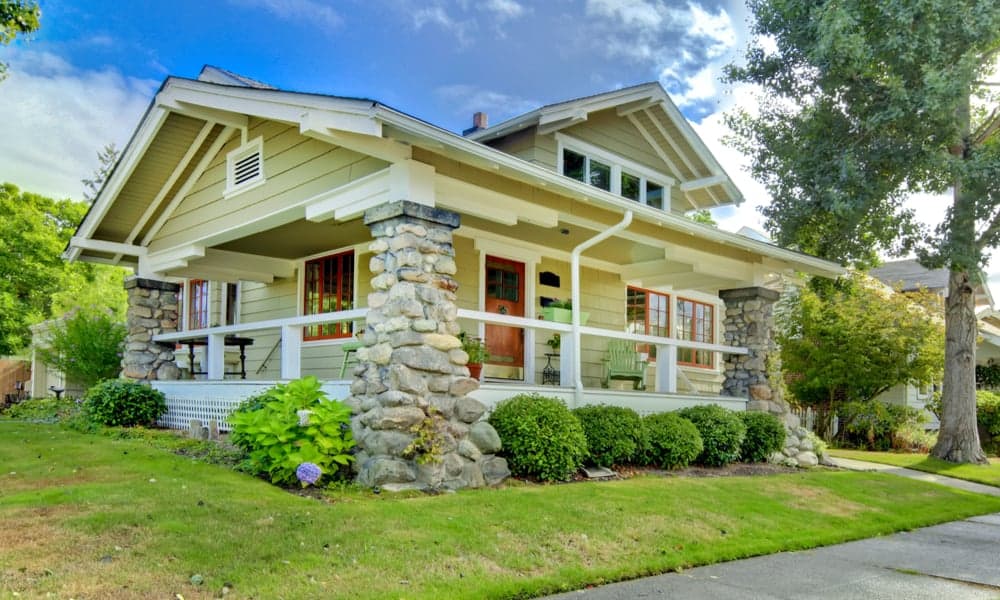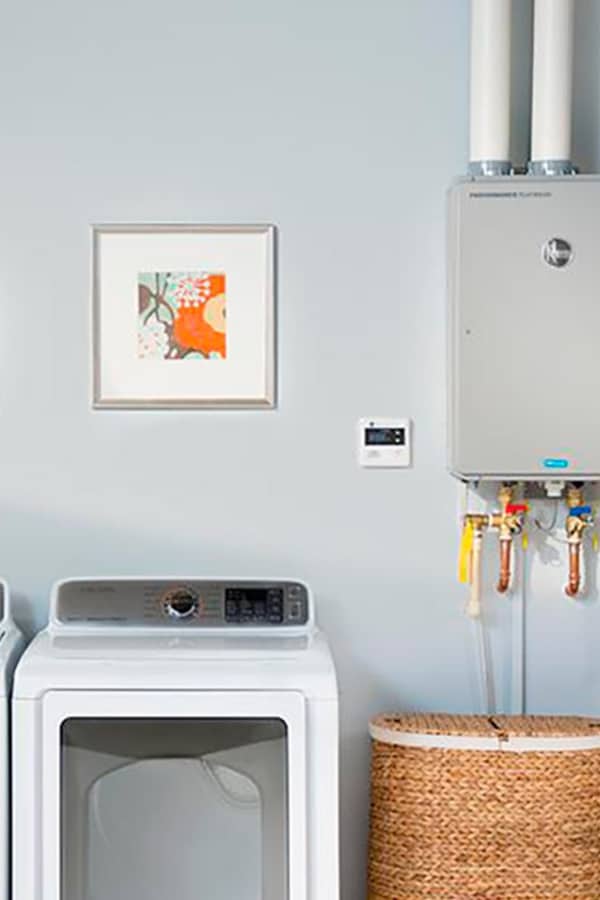Tankless Water Heater For Two Bathrooms
Tankless Water Heater For Two Bathrooms
Tankless water heaters are automatic house appliances that readily supply heated water to your household whenever you need it.
The instant and endless flow of hot water, lesser electricity consumption, easy installation, lower maintenance costs, longer lifespan, tax breaks, and longer warranties are some of the reasons why they are growing increasingly popular for residential and commercial buildings.
Perhaps the biggest reason is that these heaters are designed to save you more space since they can be placed on a small portion of the wall, unlike the usual tank-water heaters that are bulky.
If you are looking to install the tankless models and you're unsure of which size you should buy, here are some factors you should take into account:
- The size of your house
- The rate of water flow in your house
- Temperature rise
- Your household size
We'll discuss these points in better detail in this article. However, before we delve further into the topic, it is imperative that you should know not to buy a smaller size of tankless water heater than you actually need because of price differences. Let's check a quick chart before delve right in.
Sizing Guide for Residential Tankless Water heater | |||
| Household Occupants | Usage | Capacity Required (Measured in Gallon) | |
| Electric | Gas | ||
| 1-2 people | Regular/ Low | 30 | 30 |
| High | 40-50 | 40-50 | |
| 2-3 people | Regular/Low | 40 | 40 |
| High | 50 | 40-50 | |
| 3-4 people | Regular/Low | 50 | 40 |
| High | 80 | 50-75 | |
| 5+ people | Regular/Low | 80 | 50 |
| High | 80+ | 75 | |
1. The Size of Your House

Tankless water heaters vary in sizes. However, almost all modern water heaters can steam the entire water supply of your home entirely. Opting for smaller sized models can be inefficient as you might only be restricted to heating the water that flows into certain bathrooms in your house.
Unlike regular storage tank heaters that allow you to store and heat only the amount of water you expect to use, well-sized tankless heaters heat as much water as you can run through them. The size you choose must not be too small that it outputs lesser heated water than it takes to fill all your bathrooms
2. The Rate of Water Flow in Your House
We've established that tankless water heaters are not like regular tank heaters because it steams the water as it runs into your house. This means that the rate of water output from your taps is determined by the flow rate supplied by your heater. Considering this factor enable you to run more than one tap or shower at the same time without your tap running slower.
Assuming the usual rate of flow of one shower head is 1.8 gallons per minute, another shower may start running alongside the first shower at a similar rate of 1.8 gallons per minute. If both showers are connected to the tankless water heaters, it must conveniently supply enough flow rates for both showers. The required tankless water heater flow rate can be calculated by adding the rate of flow of the two showers.
1.8 GPM (shower 1) + 1.8 GPM (shower 2) = 3.6 GPM (required tankless heater flow rate)
It is not uncommon that other taps or faucets might be running in the kitchen or another bathroom while those two showers are running; this raises the required flow rate by the combined flow rate of other hot water taps and faucets.
To help you estimate the flow rates of most of your faucets, we shared some typical flow rates below. The actual flow rates may be different for your house and different appliances.
- Bathroom faucet flow rate: 0.5 GPM – 1.0 GPM
- Showerhead flow rate: 1.5 GPM – 2.0 GPM
- Kitchen tap flow rate: 2.0 GPM – 6.0 GPM
- Dishwasher flow rate: 1.5 GPM – 2.5 GPM
- Laundry washer flow rate: 2.5 GPM – 3.5 GPM
3. Temperature rise

After you have calculated the flow rate of every faucet in your house, you must now determine how much heat your heater needs to generate to give you the required heat in your water outlets. We'll take into consideration the temperature of the water that flows into your home and the temperature of the water that you want to flow out of your tap to determine the required temperature rise.
Let's assume the temperature of your home's incoming water supply is 45°F, and your shower (connected to your tankless heater) is expected to deliver water at 105°F; the required temperature rise is 60°F.
Expected Shower Temperature (105°F) – Incoming Water Temperature (45°F)
= Required Heater Temperature Rise (60°F)
If your shower flows at a rate of 1.8 GPM, your heater must heat 1.8 gallons of water by 60 degrees Fahrenheit every minute to achieve the desired temperature.
Also, it's worthy to note that the average ground temperatures may differ for different US states because some states are generally warmer or colder than others. Some states are estimated to have a temperature as high as 75 degrees, while others can be low as 35 degrees. Knowing the groundwater temperature of your state helps in calculating how hard your heater will need to work.
If you're not sure what that is, you can assume a temperature of 40 degrees to ensure you don't underestimate the amount of temperature rise needed.
4. Your Household Size

This is also another crucial factor to take note of before you install a tankless water heater in your home. Your tankless heater should be capable of handling occasional usages of hot water running from individual faucets.
However, another thing you should take note of is the times of high usage. What does this mean? Every household experiences a peak heated water usage when they have guests over, are planning a wedding or any of such occasions. If these occasions occur often, you must take it into account when choosing a tank.
Even though you might not be using heated water at all times, you must consider the times when your usage skyrockets and use that as a baseline for calculating your tankless water heater specifications. If you have company and your usage increases due to simultaneous activities from different people, such as:
- 2 Showerheads – 3.6 GPM in total
- 2 Kitchen faucets – 4 GPM in total
- 2 Laundry machines: 6 GPM in total
We are looking at an estimation of about 13.6 gallons per minute, which may be more than the normal usage. Estimating your tankless heater size based on the highest possible simultaneous usage allows for smooth heating operation during these peak periods and during periods of normal usage.
Gas Tankless Water heater or Electric Tankless Water Heater?

Apart from size, the other factor that determines the functionality of the tankless water heater is the size.
In general, gas tankless water heaters can heat up to 5 gallons of water up to 70 degrees Fahrenheit in one minute while electric tankless water heaters can heat only 2 gallons of water to 70 degrees Fahrenheit within the same time. We chose to use 70°F because that is the required temperature rise for standard groundwater of 40°F to reach a steamy 110°F.
Noticeably, tankless gas water heaters are more powerful than their electric counterparts, although the power varies for different manufacturers and models. Always check the product specifications for GPM and temperature rise ratings before purchase.
Tankless Water Heater Size FAQs
You might still have some questions relating to the size of the tankless water heater you need; we try to answer them in this section.
Which sizes last longer?
Size is not a big determinant of tankless water heater durability as much as its type. Gas tankless water heaters tend to have longer lifespans than the electric water heater.
However, the model and the product brand have a role to play as regards the lifespan, but typically, gas-fired tankless heaters tend to last for over twenty years while electric water heaters have a 7-10-year lifespan.
Where can I find the right model size?
You're likely to find all model sizes at departmental plumbing stores. For your convenience, you can consider ordering them online, but ensure you've read the specifications to avoid complications.
What size tankless water heater can I install myself?
None, this is not a DIY activity as you need the expertise of a trained installer. The installation process is quite complicated. It involves gas connections, electrical circuits, propane units, etc. In some cases, the store always recommends a tech person.
What size tankless water heater is easier to maintain?
Evidently, smaller model sizes would be easier to maintain as compared to the larger models. Regardless, at timely intervals, you will need an expert to run some check-ups on your tankless water heater. This includes checking for leakages, checking the air vents, cleaning the burner, etc.
If you live in a hard water area, you should consider using vinegar to flush your tankless water heater every 3 weeks to keep sediments from clogging the heat exchanger, especially for small sizes.
What are the prices for different tankless water heater sizes?
As regards the size and models, tankless heaters prices vary. A small sized gas-fired model can cost around $180, while the large sizes can span around $2,000. You can also get an average-sized model for $1,000. Electric tankless heaters cost around $90 – $900.
Conclusion
After you've calculated your water flow rate, required temperature rise for normal hot water usage, ensure you adjust for moments of peak usage so your heater can serve you in both times. If there's anything you still need to know apart from all the answers we've provided, please let us know in the comments below.
Tankless Water Heater For Two Bathrooms
Source: https://www.sunrisespecialty.com/tankless-water-heater-sizing

Leave a Comment